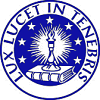
 | The German Huguenot Museum in Bad Karlshafen |
 |
History - 6. Edicts1. How the Huguenots got their name The Edict of Nantes (1598) Henry IV The edict which Henry IV promulgated in Nantes in 1598 offered the Reformed Protestants of France a relatively safe social life and limited freedom of worship. It was intended to be perpetual, end the Wars of Religion for good and restore peace and internal order to France. The edict was the written expression of a compromise between the Catholic religion of the state and the confession of a significant minority of the French population. A peaces of limited duration95 articles assured the Huguenots freedom of conscience and the exercise of Reformed Protestant services where they had been held in 1597 and on the estates of the noblemen. An amnesty for past brutalities was declared. The Huguenots were eligible for all offices of state. For the education of Reformed ministers academies could be set up. In Catholic regions, at court and in Paris no Protestant worship was allowed. The Catholics throughout the kingdom were also accorded rights. The Edict of Nantes did not bring lasting peace. After the death of Henry IV in 1610 and the fall of the Protestant citadel of La Rochelle (1628) in the reign of Louis XIII (1601-1643) the Protestants, who had once been a state within the state; were a threatened minority. Edict of Fontainebleau (1685) Louis XIV The number of restrictions placed on professions, church worship, office-holding and family life multiplied especially after the accession of Louis XIV to the throne in 1643. Further limitation of the religious rights of the Huguenots between 1643 and 1680, followed by the "dragonnades" which allowed the billeting of dragoons (booted missionaries) in the houses of Huguenots to secure their conversion by force made their situation intolerable. The campaign came to a head with the Edict of Fontainebleau which Louis XIV signed on 18th August 1685. Louis XIV (1638-1715) was following the same goal as his grandfather Henry IV. His aim was the restoration of "one king, one faith, one law". He wished to reign over a united France as an absolute monarch. New lawsThe eleven articles of the Edict of Fontainebleau revoked the ruling of the Edict of Nantes. It laid down that:
Edicts for download (scanned originals turned to PDF-format) |
© The German Huguenot Museum 2025 |